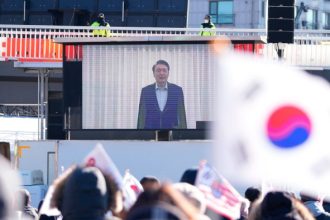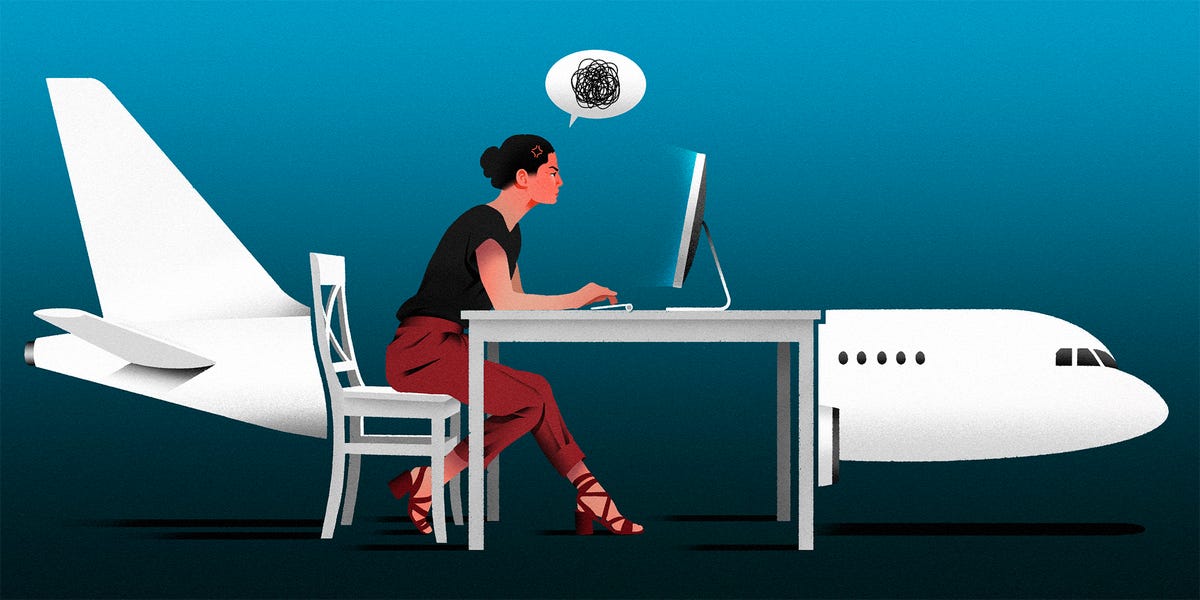How did you book your flights for your summer vacation? If you’re like most people, you bought them online — either straight from the airline’s website or through a service such as Expedia, Kayak, or Google Flights. Comparing airline prices, fees, and schedules on your own has become standard procedure. But there was a time — for those of you who are as old as I am — when the only way to book a flight was to talk to a travel agent.
When online ticket purchasing first took off in the late 1990s, it seemed revolutionary. No more middlemen! You could peruse all the options yourself! You could even monitor how the prices changed over time! Internet-based booking also forced airlines to intensify their efforts to offer more competitive fares. Since prices were now visible, customers could make their decisions based on price instead of on what the travel agent thought was the best flight.
While allowing people to make their own choices is in many ways a significant improvement, the ease and transparency of online ticket buying has come with a serious downside. The emphasis airlines put on low ticket prices has made them less competitive in every other aspect of air travel. Instead of trying to provide a high-quality experience, airlines have started to skimp on passenger comfort. They’ve squeezed seats closer together to fit more passengers on a single flight, often resulting in cramped and uncomfortable conditions. They’ve also deprioritized on-time performance, resulting in more delays. And they’ve introduced a complex system of additional fees, often hidden, for services that used to be included in the ticket price. So if you’re frustrated about tiny seats, frequent delays, and exorbitant additional fees, you may have the internet to blame.
The trade-off of low prices
In order to win over customers, companies typically compete on a handful of key elements such as price, product quality, and service. In a perfect market, customers and competitors all have equal access to information on each of those aspects, allowing people to choose a product based on a blend of the factors that they’re most concerned with. Maybe a customer is looking for the cheapest price no matter the quality or, on the flipside, is willing to pay a premium price for what is assured to be a high-quality experience. This all sounds great in theory, but in the real world, markets often have imperfect information, which can make it hard for consumers to truly evaluate the product they’re getting.
For instance, when consumers lack full insight into pricing options, businesses may focus less on pricing competition and more on other factors, like product quality or service speed. But when access to information changes, such as with the emergence of online booking, it can alter these dynamics.
By cutting operational costs — staffing fewer gate agents, cleaning teams, or other support staff — flights had less slack, resulting in more delays.
In their 2015 research paper, “The Effect of the Internet on Performance and Quality: Evidence from the Airline Industry,” the researcher Itai Ater of Tel Aviv University and the economist Eugene Orlov argue that online travel agencies like Travelocity and Expedia caused a disruption to the air-travel marketplace’s information visibility and dramatically upended the nature of competition in the industry. Before the internet, travel agents typically saw the various flight options based on duration — how long it would take to get from point A to point B — and the cost of the ticket was only a secondary consideration. As a result, airlines scrambled to reduce the length of the flight by optimizing for flight time, usually at the expense of higher fuel consumption. They also tried to differentiate themselves with perks like better meals, drinks, and lounges. But with online ticket booking, the metric for competition shifted to prices.
Once consumers could easily rank search results by price, the total dollar figure became the main decision-maker. We all know the drill: Rank the options based on price, and then start to scan the secondary considerations. Sure, one flight may have an hour layover, but it’s also $150 cheaper, so maybe it’s worth it? Everything starts from the framework of price.
And as price, rather than flight duration or quality, became the dominant consumer concern, airlines also shifted their behavior. Instead of scheduling the fastest routes, airlines now prioritize the flight path that is optimal to reduce costs — which usually isn’t the shortest flight. They also reduced the speed of flights in order to save on fuel. In fact, the research from Ater and Orlov showed that the average actual flight time for the same routes increased between 2.6 and 8.2 minutes from 1997 and 2007.
As airlines fought to cut costs, other parts of the experience suffered as well. Ater and Orlov’s study also found a strong link between increased internet penetration among airline passengers (the percentage of internet use reported in consumer-population surveys) and longer flight delays. They found that just a slight increase in internet penetration resulted in a delay of slightly over two minutes, which is a 24% increase from the average delay time. This trend persisted even when airlines scheduled longer flights — actual flight times still went up. One possible interpretation is that in order to compete on price, airlines opted to compromise on less obvious factors, such as flight delays. By cutting operational costs — staffing fewer gate agents, cleaning teams, or other support staff — flights had less slack, resulting in more delays.
Hidden fees and budget airlines
As airlines have cut up-front ticket costs in order to stay outwardly competitive, many companies have started to tag on hidden fees. Since there is less readily available information about these sorts of fees, add-ons became a way to boost revenue while keeping ticket prices down. For instance, baggage charges were added by most airlines starting in 2008 as an effort to offset the impact of price competition and generate additional revenue.
Several budget airlines have leveraged this model of ultralow up-front costs paired with hidden fees and cost-cutting measures to compete aggressively in the airline industry. Spirit Airlines, a US-based ultralow-cost carrier, has implemented this model with great success. Spirit’s primary objective is to offer bare-bones flight experiences at the lowest possible base price. The airlines argue that this gives people more options and allows them to save on the flights so they can travel more often. However, what travelers often don’t realize is that this base price excludes many services typically incorporated in the ticket prices of traditional airlines. Spirit charges additional fees for services such as carry-on bags, advance seat selection, onboard refreshments, and even for printing boarding passes at the airport. This à la carte pricing model allows the airline to maintain low ticket prices while generating revenue through added services.
Similarly, Ryanair, the Ireland-based budget airline, has perfected the art of the low-cost, high-fee model. Much like Spirit, Ryanair offers basic flight tickets at very low prices but charges extra for almost everything else — from seat reservations to infant facilities. These extra fees form a significant part of Ryanair’s revenue — 45% in 2021 compared to 22% for major US carriers. The model also allows Ryanair to attract price-conscious travelers with their seemingly low ticket prices, while the added fees ensure profitability.
In their 2016 study “Do Bags Fly Free? An Empirical Analysis of the Operational Implications of Airline Baggage Fees,” Vinayak Deshpande from the University of North Carolina and Mazhar Arıkan from the University of Kansas argue that contrary to initial expectations, the introduction of baggage fees have sometimes been associated with improved service quality such as better operational and on-time performance. They argue that the additional fees actually enabled airlines to enhance the overall service experience by limiting the amount of checked baggage and by boosting revenue generated beyond the base ticket price.
But while the extra fees may have helped some performance metrics, they have caused a headache for consumers who are caught by surprise when they are hit with $100 in extra fees. Plus, the emergence of ultralow-cost airlines that sacrifice service and comfort has increased the pressure for other airlines to compete on price and cut back on other amenities.
Competing on being on time
This race to slash prices has seemingly come to a logical conclusion. Facing pandemic profit declines and few options to cut costs further, airlines have actually been increasing fares somewhat over the past few years. But with little room to make prices more competitive, these companies have begun to compete on other aspects of the air-travel experience, such as on-time performance. On-time data only became accessible to customers in 2010, and as it’s become more ubiquitous, airlines have been forced to try and improve on the metric to win over customers. But their solution didn’t actually aim at reducing delays.
A 2018 study by Northwestern University researchers Jan A. Van Mieghem and Yuval Salant, and Dennis J. Zhang from Washington University in St. Louis showed that instead of cutting down on delays, airlines strategically increased their scheduled flight durations to give themselves more buffer time and increase the appearance of being on time. The authors analyzed approximately 43 million domestic US flights that were consistently operated by the same airlines from 1997 to 2017. They observed an average increase of 8.1% in the scheduled duration of these flights over a 21-year period and found that more than 45% of increased duration time could be attributed to airlines’ strategic schedule padding to achieve better on-time performance. Additionally, the research suggested a correlation between decreased competition on a route and increased strategic padding.
Say a flight is estimated to take two hours and 45 minutes. In order to give that flight the appearance of being on-time, the airline might list the flight duration as three hours. After all, no one is upset if a flight lands 15 minutes early — and if the flight is delayed by 10 minutes, the airline still gets a gold star on the on-time performance scoreboard. This practice allows airlines to improve their on-time performance and reduce the risk of delays while ultimately boosting cost efficiency. But this “solution” just papers over the increase in flight delays that’s emerged in the past two decades.
Since everyone became their own travel agent and airlines began fiercely competing over price and on-time performance, airlines have shifted their focus. Instead of prioritizing short flights and comfortable amenities, everything became about cost. And as the industry continues to evolve in the digital era, finding the right balance between price competition, flight-duration optimization, and service quality will be crucial for airlines to remain successful. And if you want a more comfortable flying experience, next time you book flights, don’t buy the cheapest option!
Gad Allon is the faculty director of the Jerome Fisher Program in Management and Technology and a professor of operations, information, and decisions at The Wharton School of the University of Pennsylvania.
Read the full article here





